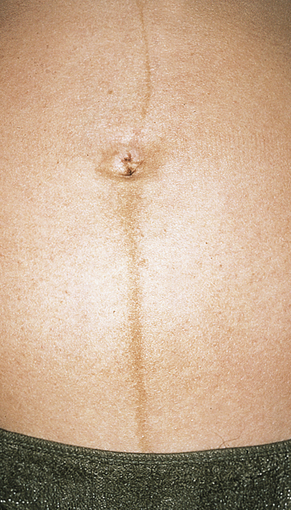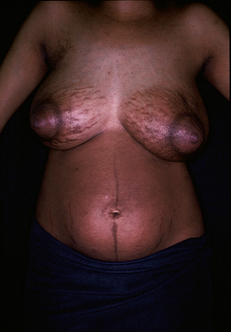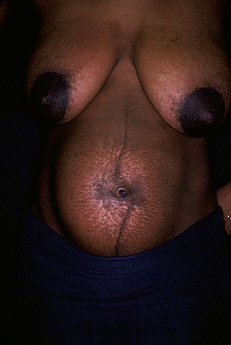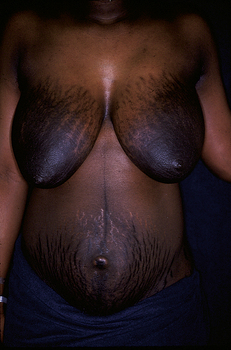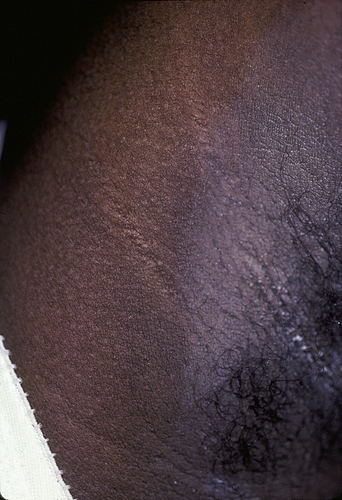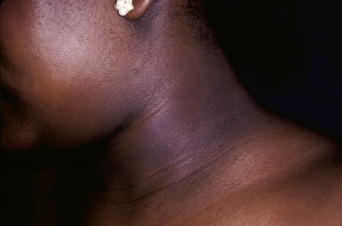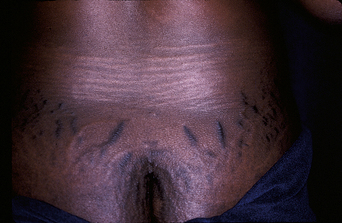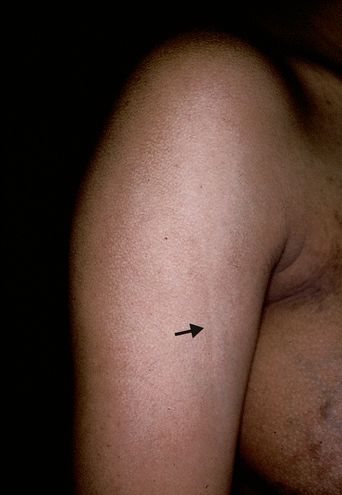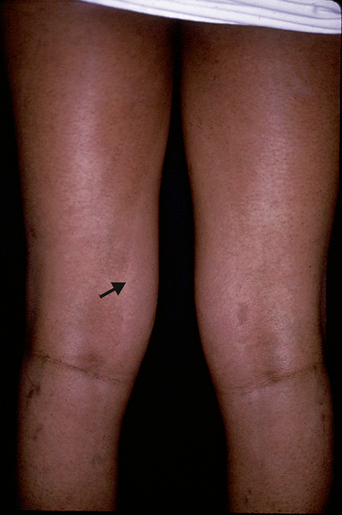CHAPTER 3 Physiologic Skin Changes of Pregnancy
Pregnancy induces a number of changes in the skin, hair, and nails which are regarded as physiological. It is important to recognize that these changes occur so they are not confused with true skin diseases. The physiological changes can be divided into several categories (Table 3.1).
Table 3.1 Physiologic Changes in Skin, Hair, and Nails
| Hyperpigmentation | Hair and nail changes |
| Melasma | Vascular changes |
| Striae distensae | Apocrine/eccrine gland activity |
| Pruritus gravidarum | Immunological skin changes |
Hyperpigmentation
Localized or generalized hyperpigmentation occurs to some extent in 90% of pregnant women. These changes are most prominent in patients with darkly pigmented skin, although they occur to some degree in fair-skinned individuals. Perhaps the most familiar example is the darkening of the lower abdominal midline, the linea alba. This is described in obstetric textbooks as an early change of pregnancy, but it may not be apparent until several months’ gestation, especially in a first pregnancy. The midline streak usually proceeds from the symphysis pubis to the umbilicus, and can extend to the xiphoid process (Figures 3.1–3.4). It tends to appear earlier in subsequent pregnancies.
The nipples and areolae become pigmented (see Figures 3.2–3.4), as do the external genitalia and the axillae (Figure 3.5). Darkening of the neck is particularly bothersome to some patients (Figure 3.6), but this gradually fades postpartum, along with other pigmentary changes. Striae (“stretch marks”) are common, and may darken in susceptible individuals (Figure 3.7), along with other scars, nevi, and freckles although these pigmentary changes tend to regress postpartum. Vulvar melanosis may also develop during pregnancy (Figure 3.8). This increased melanogenesis is thought to be a result of increased levels of alpha and beta-melanocyte-stimulating hormone (MSH), beta-endorphin, estrogen, and progesterone 1.
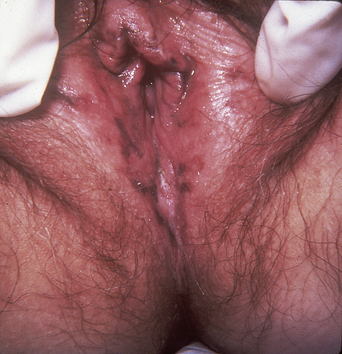
Figure 3.8 Vulvar melanosis. This benign change developed during pregnancy and did not require treatment.
Some dark-skinned people (male and female) have pigmentary demarcation lines (also called Voigt or Futcher lines) along the outer portion of the upper arms and/or posterior legs. These may not have been noticed by the patient until the general darkening of pigment during pregnancy makes them more prominent (Figures 3.9 and 3.10).
